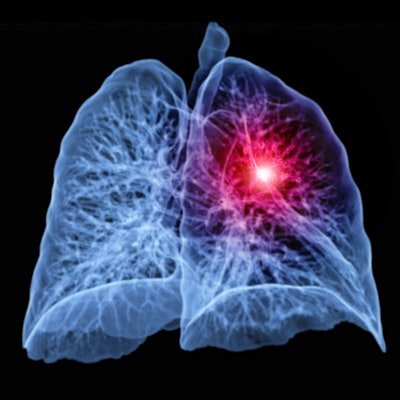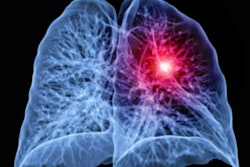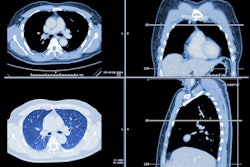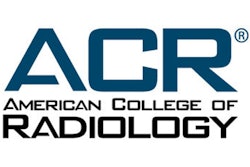
Should clinical information gleaned from interval diagnostic low-dose chest CT scans for lung cancer affect the timing of later rounds of lung screening? Perhaps, according to research presented at the recent RSNA 2021 meeting.
"In lung cancer screening participants, findings on interval diagnostic chest CT can potentially be used to adjust the timing of subsequent lung cancer screening CT follow-up," presenter Dr. Pegah Khoshpouri of the University of Utah and colleagues noted in their study abstract.
Lung cancer is the most common cause of cancer-related death, with more than 160,000 deaths per year in the U.S., Khoshpouri noted. The National Lung Screening Trial (NLST) demonstrated a 20% reduction in mortality in patients at high risk of the disease who underwent annual low-dose CT screening.
This year, both the U.S. Preventive Services Task Force (USPSTF) and the U.S. Centers for Medicare and Medicaid Services (CMS) adjusted lung cancer screening guidance to expand eligibility, lowering the starting age from 55 to 50 and the pack-year smoking history from 30 years to 20. Healthcare providers hope these new recommendations will make lung cancer screening even more effective for people at risk of the disease.
But there is currently no guidance about how to use clinical information from diagnostic chest CTs performed on a screening population in between annual exams, Khoshpouri told session attendees. She and colleagues sought to investigate the incidence of these interval scans and their impact on patient management regarding follow-up CT exams for lung cancer screening.
The study included 2,443 individuals who underwent CT lung cancer screening between January 2016 and August 2019. Individuals were included under the screening guidelines that were current at the time, with a screening starting age of 55 and a 30 pack-year smoking history.
Of these participants, 784 (32.1%) had undergone at least two low-dose chest CT scans for lung cancer screening during the study time frame. And of these patients who had at least two low-dose CT exams, 29 also had an interval diagnostic chest CT exam.
Khoshpouri's group found that in 96.5% of patients who had an interval diagnostic CT exam, the regularly scheduled follow-up lung cancer screening CT scan did not add any relevant clinical information.
"In the majority of patients [who underwent diagnostic chest CT between screening CT exams] the subsequent low-dose CT findings were concordant with those on the diagnostic exam," she said.
The study suggests that findings from interval diagnostic chest CT scans for lung cancer indications could shape management recommendations for low-dose lung cancer screening CT follow-up.
"Interval diagnostic chest CT could 'reset the clock,'" Khoshpouri said. "It could also serve as a potential substitute for annual low-dose CT, especially if it coincides with the next annual screening date."
More research is needed, she concluded.
"Our study needs to be supported by larger cohort to provide enough information for ideal management changes in lung cancer screening programs considering diagnostic CT findings," she said.





















